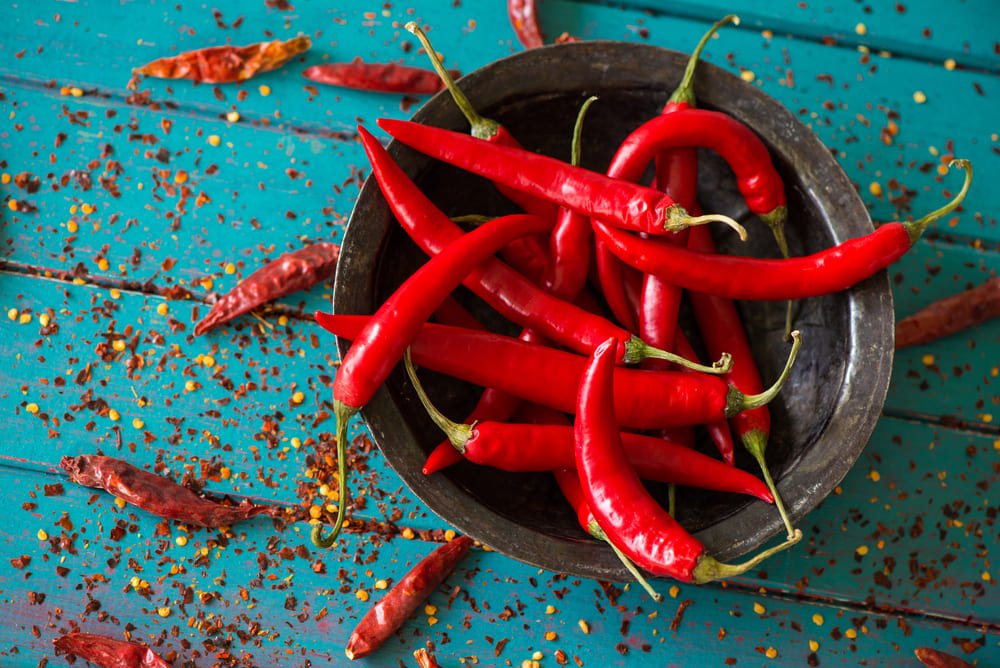- You have no items in your shopping cart
- Subtotal: ₹0
Part of the capsicum family, chilies come in scores of varieties and colors (from green to yellow, orange, black and red) and are one of the most popular spices in the world.
Chilies can be used fresh, dried, or powdered, and the level of spicy taste varies from type to type, from sweet and mellow to excessively hot – as a general rule, the smaller the chili, the hotter the taste. The compound that produces the heat is called capsaicin, which is found in the pith and some in the seeds too. But it’s not all about heat – each type has its own distinct flavor.


